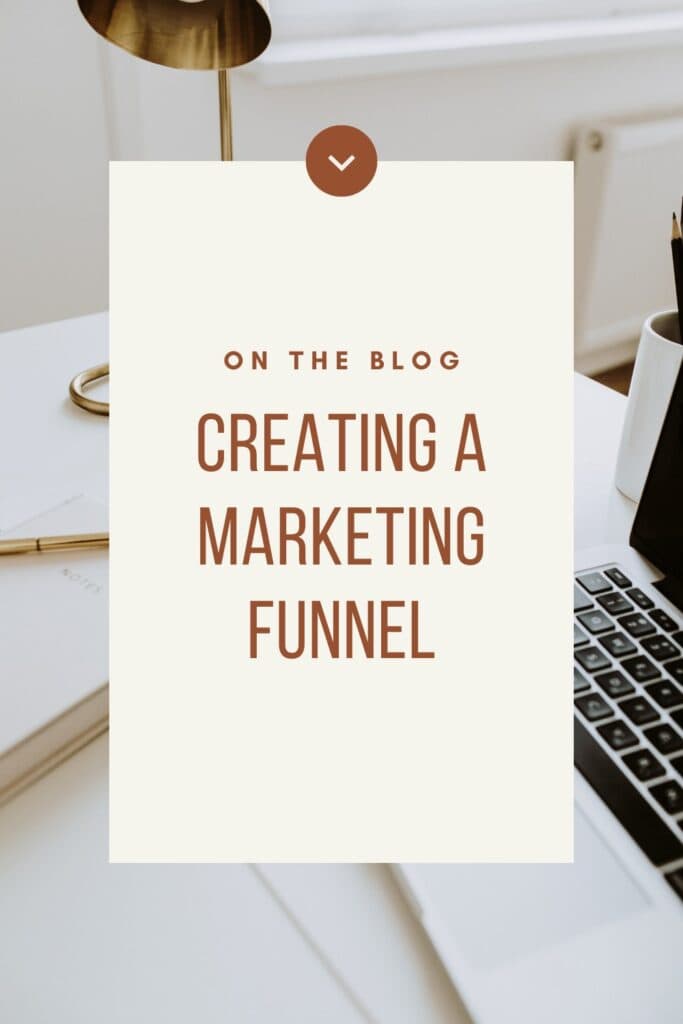If you run your own business whether that is online or a brick and mortar, you need a system to convert leads into customers. This is where creating a marketing funnel becomes essential. A marketing funnel is a model that represents the journey potential customers go through from the first interaction with your brand to the final purchase and beyond. It helps businesses visualize and optimize the process of attracting, engaging, and converting leads. In this blog post, we’ll explore the key stages of creating a marketing funnel and provide actionable steps to create an effective one for your business.
Understanding the Marketing Funnel Stages
A typical marketing funnel is divided into four main stages: Awareness, Interest, Decision, and Action (AIDA). Let’s break down each stage to understand its significance and the strategies involved.
Awareness
The top of the funnel is all about making potential customers aware of your brand. At this stage, your goal is to attract as many people as possible by providing valuable content and building brand visibility. Effective strategies for this stage include:
- Content Marketing: Create blog posts, videos, infographics, and other content that addresses the pain points and interests of your target audience.
- Social Media Marketing: Leverage platforms like Facebook, Instagram, LinkedIn, and Twitter to share your content and engage with your audience.
- Search Engine Optimization (SEO): Optimize your website and content for relevant keywords to increase organic traffic.
Interest
Once you’ve captured the attention of potential customers, the next step is to nurture their interest and build like and trust. The middle of the funnel focuses on educating prospects about your products or services and building a relationship with them. Strategies for this stage include:
- Email Marketing: Send targeted emails with valuable information, offers, and updates to keep your leads engaged.
- Webinars and Workshops: Host online events to showcase your expertise and provide in-depth insights into your offerings.
- Lead Magnets: Offer free resources like eBooks, checklists, guides or templates in exchange for contact information to build your email list.
Decision
The decision stage is where prospects consider whether your product or service meets their needs and if it can help them solve a problem. At this point, it’s crucial to provide them with all the information they need to make an informed decision. Strategies for this stage include:
- Case Studies and Testimonials: Share success stories and reviews from satisfied customers to build trust and credibility.
- Product Demos: Offer live or recorded demonstrations of your product to show its features and benefits in action.
- Comparison Guides: Provide detailed comparisons between your product and competitors’ offerings to highlight your unique selling points.
Action
The bottom of the funnel is where prospects take the final step to become customers. Your goal at this stage is to make the purchasing process as easy and compelling as possible. Strategies for this stage include:
- Special Offers and Discounts: Provide limited-time promotions to incentivize immediate purchases.
- Clear Call-to-Actions (CTAs): Ensure your CTAs are prominent and straightforward, guiding prospects towards the next steps.
- Simplified Checkout Process: Make sure the buying process is user-friendly and is not complicated.

Steps to Creating a Marketing Funnel
Now that we have a clear understanding of the stages involved, let’s dive into the practical steps for creating a marketing funnel for your business.
Define Your Target Audience
The foundation of any successful marketing funnel is an understanding of your target audience. Identify who your ideal customers are, what their pain points are, and where they spend their time online. Use tools like creating an ideal avatar and market research to gather this information.
Map Out the Customer Journey
Once you know who your audience is, outline their journey from awareness to action. Identify the key touchpoints where they interact with your brand and the types of content or offers that will resonate with them at each stage.
Create High-Quality Content
Content is the backbone of your marketing funnel. Create valuable, relevant, and engaging content for each stage of the funnel. For instance, blog posts and social media content work well at the awareness stage, while detailed guides, case studies, and testimonials are more effective at the decision stage.
Implement Lead Generation Strategies
To move prospects from awareness to interest, you need effective lead generation strategies. Use lead magnets, landing pages, and forms to capture contact information. Make sure your offers are enticing enough for prospects to share their details.
Nurture Leads with Email Marketing
Email marketing is a powerful tool for nurturing leads through the funnel. Segment your email list based on where prospects are in their journey and send targeted content to move them closer to making a purchase.
Leverage Marketing Automation
Marketing automation tools can streamline your funnel management by automating repetitive tasks like sending emails, scoring leads, and tracking user behavior. This allows you to focus on creating high-quality content and optimizing your strategies.
Analyze and Optimize
Regularly analyze the performance of your marketing funnel. Use metrics like conversion rates, click-through rates, and customer acquisition costs to identify bottlenecks and areas for improvement. A/B testing can help you determine which strategies work best and optimize your funnel accordingly.
Creating a marketing funnel is not a one-time task but an ongoing process that requires continuous refinement and optimization. By understanding your audience, mapping out their journey, and providing valuable content at each stage, you can effectively guide prospects from awareness to action. Implementing the right strategies and tools will help you build a robust marketing funnel that drives conversions and grows your business. Remember, the key to a successful marketing funnel is staying agile and responsive to the changing needs and behaviors of your audience.








